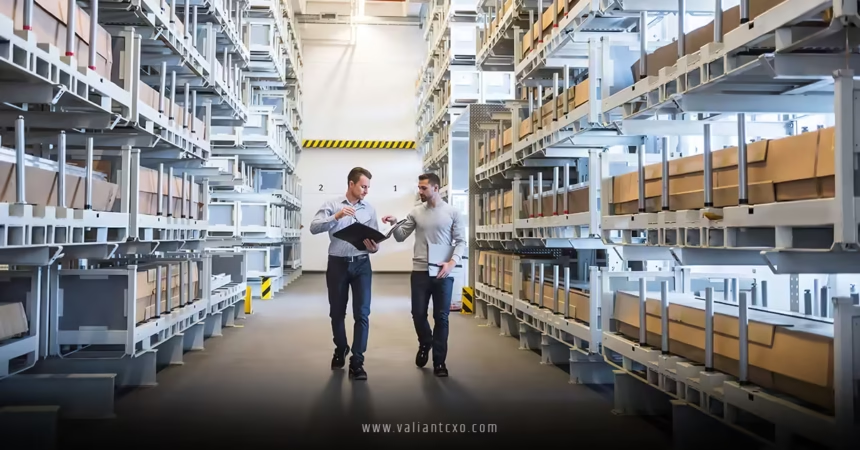Supply Chain Resilience: Building Stronger Global Trade Networks isn’t just a buzzword—it’s a lifeline for businesses navigating today’s unpredictable world. Imagine your supply chain as a bridge spanning a stormy river. One weak link, and the whole thing could collapse, leaving goods stranded and customers frustrated. With global trade facing disruptions like pandemics, geopolitical tensions, and natural disasters, resilience is the key to keeping that bridge standing strong. In this article, we’ll dive deep into what makes a supply chain resilient, why it matters, and how businesses can build stronger global trade networks to thrive in chaos. Buckle up, because we’re about to unpack a topic that’s as critical as it is complex!
What Is Supply Chain Resilience?
So, what exactly does Supply Chain Resilience: Building Stronger Global Trade Networks mean? At its core, it’s about creating a supply chain that can bend without breaking. Think of it like a bamboo stalk in a storm—flexible enough to sway, but tough enough to stay rooted. A resilient supply chain can withstand disruptions, adapt to changes, and recover quickly, ensuring goods keep flowing from suppliers to customers.
Resilience isn’t just about surviving a crisis; it’s about thriving through it. It involves planning, foresight, and a knack for turning challenges into opportunities. Whether it’s a port shutdown, a sudden tariff hike, or a global chip shortage, a resilient supply chain keeps the wheels turning. But how do you get there? Let’s break it down.
Why Resilience Matters in Global Trade
Global trade is like a giant game of connect-the-dots, with suppliers, manufacturers, and customers spread across continents. One misstep—a delayed shipment, a factory closure—can ripple through the entire network. Supply Chain Resilience: Building Stronger Global Trade Networks ensures businesses can handle these hiccups without losing their cool (or their customers).
The stakes are high. According to a 2021 McKinsey report, companies with resilient supply chains can reduce losses by up to 50% during disruptions. That’s not just pocket change—it’s the difference between staying in business and shutting down. From retail to tech, every industry feels the pinch when supply chains falter. Resilience isn’t a luxury; it’s a necessity.
The Building Blocks of Supply Chain Resilience
Building a resilient supply chain is like assembling a puzzle. Each piece—planning, technology, partnerships—plays a critical role. Let’s explore the key components that make Supply Chain Resilience: Building Stronger Global Trade Networks possible.
Risk Assessment and Planning
First things first: you can’t prepare for what you don’t see coming. Risk assessment is the foundation of resilience. It’s like checking the weather before a road trip—you need to know if a storm’s brewing. Businesses must identify potential risks, from natural disasters to supplier bankruptcies, and map out their impact.
Start by auditing your supply chain. Where are your suppliers located? Are you overly reliant on one region? For example, during the 2011 Japan earthquake, companies dependent on Japanese semiconductors were left scrambling. Diversifying suppliers across regions can mitigate such risks. Create contingency plans, like backup suppliers or alternative shipping routes, to keep things moving when disaster strikes.
Diversification of Suppliers and Markets
Relying on a single supplier is like putting all your eggs in one basket—drop it, and you’re in trouble. Supply Chain Resilience: Building Stronger Global Trade Networks demands diversification. Spread your suppliers across different regions, countries, or even continents to reduce dependency on any one source.
Take Apple, for instance. While heavily reliant on Chinese manufacturing, it’s been gradually diversifying to countries like India and Vietnam. This not only reduces risk but also opens new markets. Diversification isn’t just about suppliers—it’s about customers, too. Expanding into new markets can cushion the blow if one region faces economic turmoil.
Technology as a Game-Changer
Technology is the secret sauce in Supply Chain Resilience: Building Stronger Global Trade Networks. Tools like AI, IoT, and blockchain are revolutionizing how businesses track, predict, and manage their supply chains. Imagine having a crystal ball that shows you exactly where your shipment is and when it’ll arrive—that’s what technology offers.
AI can predict demand spikes or spot potential disruptions before they happen. IoT devices track shipments in real-time, ensuring nothing gets lost in transit. Blockchain, meanwhile, adds transparency, making it easier to verify supplier credentials or track ethical sourcing. According to Forbes, companies using advanced analytics can improve supply chain efficiency by up to 15%. That’s a game-changer in a world where every second counts.
Strong Partnerships and Collaboration
No business is an island. Supply Chain Resilience: Building Stronger Global Trade Networks thrives on collaboration. Strong relationships with suppliers, logistics providers, and even competitors can make or break your resilience. Think of it like a neighborhood watch—everyone looks out for each other.
Regular communication with suppliers builds trust and ensures everyone’s on the same page. Joint planning sessions, shared data platforms, and even co-investing in technology can strengthen these bonds. During the COVID-19 pandemic, companies that collaborated closely with their suppliers were better equipped to navigate shortages and delays.
Challenges to Building Resilient Supply Chains
Building Supply Chain Resilience: Building Stronger Global Trade Networks sounds great, but it’s not all smooth sailing. There are hurdles to overcome, and they’re not small. Let’s look at some of the biggest challenges and how to tackle them.
Cost vs. Resilience Trade-Off
Here’s the rub: resilience often comes with a price tag. Diversifying suppliers, investing in technology, or stockpiling inventory can strain budgets. Smaller businesses, in particular, may struggle to justify the upfront costs. But here’s the thing—resilience is an investment, not an expense. The cost of a disruption, like lost sales or damaged reputation, is often far higher.
To balance cost and resilience, start small. Prioritize high-impact risks and address them first. For example, if 80% of your components come from one supplier, focus on diversifying that relationship before tackling less critical areas. It’s about being strategic, not reckless.
Geopolitical and Environmental Risks
Geopolitical tensions—like trade wars or sanctions—can throw a wrench into global trade. Add in climate change, with its rising sea levels and extreme weather, and you’ve got a recipe for chaos. Supply Chain Resilience: Building Stronger Global Trade Networks means anticipating these risks and planning around them.
For instance, the 2021 Suez Canal blockage showed how one stuck ship could disrupt global trade for weeks. Businesses can counter such risks by mapping alternative routes or using multimodal transport (combining air, sea, and land). Flexibility is key—think of it like having a Plan B, C, and D.
Talent and Expertise Gaps
Resilient supply chains need skilled people to manage them. Unfortunately, there’s a growing shortage of supply chain professionals with the right expertise. According to Gartner, 50% of supply chain organizations struggle to find talent with digital and analytical skills.
Investing in training is a start. Encourage your team to upskill in areas like data analytics or risk management. Partnering with universities or industry groups can also help build a pipeline of talent. A well-trained team is like the glue that holds your supply chain together.
Strategies for Supply Chain Resilience
Now that we’ve covered the challenges, let’s talk solutions. Here are practical strategies to achieve Supply Chain Resilience: Building Stronger Global Trade Networks.
Embrace Digital Transformation
Digital tools are your best friend in building resilience. Invest in software that provides end-to-end visibility of your supply chain. Platforms like SAP or Oracle offer real-time insights into inventory, shipments, and demand. Automation can also streamline repetitive tasks, freeing up your team to focus on strategy.
Don’t get overwhelmed by the tech jargon. Start with one tool—like a demand forecasting platform—and scale up as you see results. The goal is to make your supply chain smarter, not more complicated.
Build Redundancy Without Breaking the Bank
Redundancy—having backup plans or extra inventory—can be a lifesaver. But overstocking can tie up capital and lead to waste. The trick is to find a sweet spot. Use just-in-case inventory for critical components while relying on just-in-time for less essential items. It’s like keeping an umbrella handy without carrying a whole closet of rain gear.
Foster a Culture of Agility
Resilience isn’t just about systems; it’s about mindset. Encourage your team to think on their feet and embrace change. Scenario planning—where you simulate disruptions and test responses—can help build this agility. It’s like practicing a fire drill: when the real thing happens, everyone knows what to do.
The Future of Supply Chain Resilience
What’s next for Supply Chain Resilience: Building Stronger Global Trade Networks? The future is exciting, with emerging trends like green logistics and AI-driven supply chains taking center stage. Sustainability is becoming non-negotiable—customers and regulators are demanding eco-friendly practices. Think electric delivery trucks or carbon-neutral shipping.
AI is also evolving, with predictive models becoming more accurate. Imagine a supply chain that not only reacts to disruptions but anticipates them months in advance. Blockchain will continue to grow, ensuring transparency in sourcing and reducing fraud. The supply chain of tomorrow will be smarter, greener, and more connected than ever.
Conclusion
Supply Chain Resilience: Building Stronger Global Trade Networks is more than a strategy—it’s a mindset shift. By assessing risks, diversifying suppliers, embracing technology, and fostering collaboration, businesses can create supply chains that don’t just survive but thrive in uncertainty. The road ahead isn’t easy, but the rewards—stability, customer trust, and competitive edge—are worth it. So, take a hard look at your supply chain today. Where can you strengthen it? What risks are you overlooking? Start small, think big, and build a network that’s ready for anything. The world of global trade is waiting for you to make your mark.
FAQs
1. What is Supply Chain Resilience: Building Stronger Global Trade Networks?
It’s the ability of a supply chain to withstand, adapt, and recover from disruptions like natural disasters or geopolitical issues, ensuring smooth global trade operations.
2. Why is diversification important for supply chain resilience?
Diversifying suppliers and markets reduces dependency on a single source, minimizing risks from regional disruptions and enhancing Supply Chain Resilience: Building Stronger Global Trade Networks.
3. How can technology improve supply chain resilience?
Tools like AI, IoT, and blockchain provide real-time tracking, predictive analytics, and transparency, strengthening Supply Chain Resilience: Building Stronger Global Trade Networks.
4. What are the biggest challenges to building resilient supply chains?
Challenges include high costs, geopolitical risks, and talent shortages, all of which complicate efforts to achieve Supply Chain Resilience: Building Stronger Global Trade Networks.
5. How can small businesses achieve supply chain resilience?
Small businesses can start with risk assessments, diversify suppliers gradually, and adopt affordable tech to build Supply Chain Resilience: Building Stronger Global Trade Networks.
Read More:valiantcxo.com


